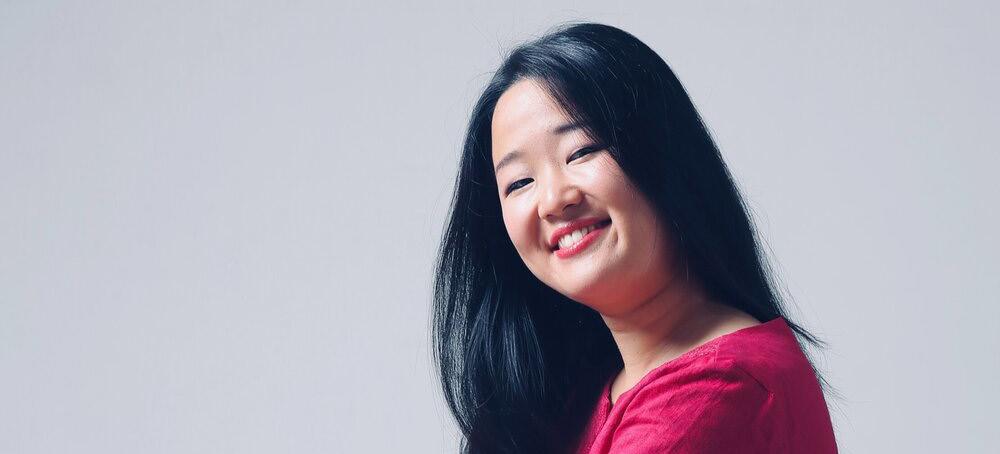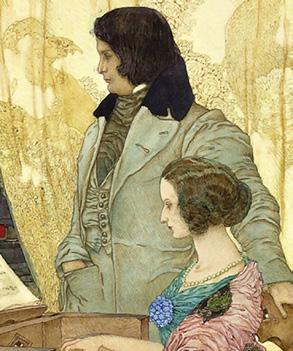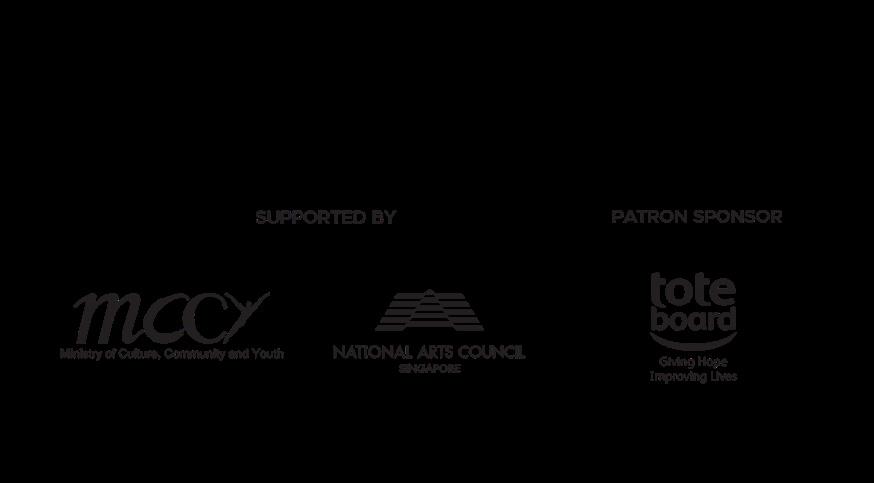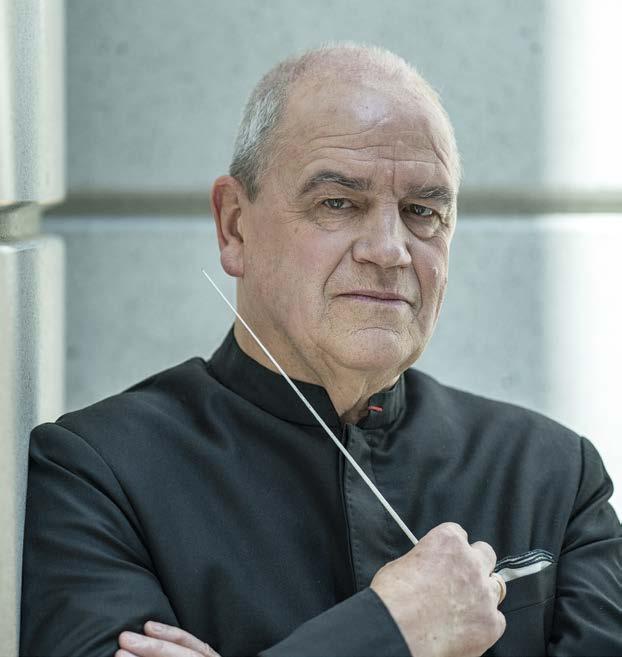






Andrew Litton piano
Katharina Kang Litton viola
KORNAUTH
Viola Sonata in C-sharp minor, Op. 3
RAZAZ
Spellbound for solo viola (Asian Premiere)
WEBER
Andante and Rondo Ongarese, Op. 35
Intermission
FUCHS
Selections from 6 Phantasiestücke, Op. 117
BRAHMS
Viola Sonata in E-flat major, Op. 120, No. 2
24 mins 10 mins
7 mins 20 mins 13 mins 23 mins
CONCERT DURATION: approximately 1 hr 45 mins (with 20 mins intermission)
Andrew Litton is Music Director of the New York City Ballet, former Principal Guest Conductor of the Singapore Symphony Orchestra, Conductor Laureate of Britain’s Bournemouth Symphony and Music Director Laureate of Norway’s Bergen Philharmonic. Under Litton’s leadership the Bergen Philharmonic gained international recognition through extensive recording and touring. For his efforts, Norway’s King Harald V knighted Litton with the Norwegian Royal Order of Merit. His many honours also include Yale’s Sanford Medal, the Elgar Society Medal, and an honorary Doctorate from the University of Bournemouth.

Litton was Principal Conductor of the Bournemouth Symphony from 1988–1994. As Music Director of the Dallas Symphony from 1994–2006, he hired over one third of the players, led the orchestra on three major European tours, and appeared four times at Carnegie Hall. His discography boasts over 135 recordings.
This season, Litton returns to the Bournemouth and Singapore Symphony Orchestras. He has recently conducted the BBC National Orchestra of Wales at the 2021 BBC Cardiff Singer of the World competition, and will be making appearances with NFM Wrocław Philharmonic, Tokyo Metropolitan Symphony Orchestra, Philharmonie Zuidnederland, among others. An avid opera conductor with a keen theatrical sense, Litton has led major opera companies such as the Metropolitan Opera, The Royal Opera Covent Garden, Opera Australia and Deutsche Oper Berlin. In Norway, he was key to founding the Bergen National Opera, where he led numerous acclaimed performances.
An accomplished pianist, Litton often performs as a soloist, conducting from the keyboard. He is also an acknowledged expert on and performer of Gershwin’s music and serves as Advisor to the University of Michigan Gershwin Archives.
DOMINIC PHUA ©Equally at home on both the violin and viola, Katharina Kang Litton has been Principal iola of New York City Ballet since 2018. As a violinist, she has performed as soloist with leading in orchestras in Moscow, St. Petersburg, Frankfurt, Amsterdam, Bergen, Baltimore, Berlin, Cologne, Hamburg, New York and Rio de Janeiro.
Kang Litton has been soloist with Dmitrij Kitajenko, Kirill Petrenko, Christoph Altstadt, Arnold Katz, Alondra de la Parra, and Neeme Järvi.
As a recitalist and chamber musician, she has collaborated with artists Pinchas Zukerman, Midori Goto, Hagai Shaham, Viviane Hagner, Elmar Oliviera, Pavel Gililov, Shmuel Ashkenasi, Timothy Eddy, Franz Helmerson, Philip Setzer and the Schumann Quartet.
Kang Litton was born in Seoul and grew up in Germany where she studied at the Robert Schumann Musikhochschule Düsseldorf with Rosa Fain from the age of 9. She received her bachelor and master’s degrees at Manhattan School of Music as a student of Pinchas Zukerman and Patinka Kopec. She received her Artist Diploma at the Cleveland Institute of Music with Jaime Laredo.
Kang Litton enjoys performing at international summer music festivals regularly and has recently taken part in world premieres by composers Nico Muhly, Dennis Bell and Ambrose Akinmusire.
 MUSICIANS OF NEW YORK CITY BALLET ©
MUSICIANS OF NEW YORK CITY BALLET ©
EGON KORNAUTH (1891 – 1959)
Viola Sonata in C-sharp minor, Op. 3 I. Fest und bestimmt - Etwas bewegt II.
III.
Langsam, sehr ausdrucksvoll Wild und stürmisch
Born in what is today Olomouc, Czechia at the end of the 19th century, when it was still part of Austria-Hungary, Kornauth’s music was once a staple in central European concert halls, though it started falling out of favour even during his lifetime. He studied with some leading lights of the day (one of whom, Robert Fuchs, is also featured on tonight’s programme), and eventually began teaching music theory at Vienna University, though he also enjoyed some success as a pianist and conductor in the inter-war period.
His music is fundamentally lateRomantic, and he himself recognised it was not in his character to be groundbreaking. The Viola Sonata, therefore, is a very attractive work in the manner of the early Richard Strauss: rhythmically and formally Brahmsian, with lots of clever harmonic sleights-of-hand. Kornauth himself played the cello all his life, and his intimate knowledge of string writing shows through. The viola is never crowded by the piano, and allowed to shine with virtuosic passages in the outer movements. The middle Langsam demonstrates how close the viola is to the human
voice (an opinion shared by Mahler) with some intensely expressive lyrical lines, and the final movement pauses in its wild stride to recall some of this tenderness before both the piano and viola come to a triumphant end.
GITY RAZAZ (b. 1986)
Spellbound for solo viola (Asian Premiere)
Spellbound for solo viola has the intimate quality of a reminiscing soliloquy. Textures and soundscapes weave in and out of an original melody that conjures the improvisatory lyricism of traditional Persian music. I was particularly inspired by the mourning and sul ponticello sound quality that is inherent to Persian instruments such as the Ney and Kamanche. Spellbound was commissioned by Maggie Snyder for the VIOLA2020 project in celebration of the 100th anniversary of the 19th amendment establishing women’s right to vote.
CARL MARIA VON WEBER (1786 – 1826)
Andante and Rondo Ongarese, Op. 35
Weber’s star once shone brightly as one of the foremost German composers of his era, and while his operas are still rightly performed today, much of his other work has fallen to the status of “teaching music”. That this is an unfortunate circumstance to befall the composer of Der Freischütz can be heard in every one of his “lesser” pieces, all of which are carefully crafted and show a deep knowledge of every instrument he wrote for. His clarinet music still survives, though his piano concerto (Konzertstück in F minor), once championed by people of the stature of Mendelssohn and Liszt and a favourite until the middle of the 20th century, has now almost completely evaporated from the concert stage.
Originally for bassoon and orchestra, the solo part’s range makes it prime material to be co-opted by viola players, for whom concertante works are few and far between. The Andante is an aria for the solo that undergoes a few variations of increasing technical virtuosity, though the main musical interest comes in the Rondo ongarese, a fauxHungarian polka that exhibits the 19th-century taste for the “exoticism” of “eastern” Hungarian music.
ROBERT FUCHS (1847 – 1927)
Selections from 6 Phantasiestücke, Op. 117 III. IV. V. Mässig
Fuchs had the honour of being greatly admired by Brahms, and it is not hard to see why: both composers shared a deep love for the folk dances of the Germanic people, and a command of the craft needed to meld those forms with their own compositional technique. The first of Fuchs’s “Fantasy Pieces”, not on tonight’s programme, is a Ländler of the sort Brahms was fond of writing, and the third sounds like a scherzo from one of Brahms’s chamber pieces (complete with hemiolas!), such was the affinity the composers had for each other.
It is, in all probability, this “almostBrahms” feeling that has led to the neglect of Fuchs’s music today, though his own shy character did not help in bringing him to the public eye. Even so, there is much to recommend in his chamber music, considered the highlight of his output. The fourth piece is a moving song with particularly sweet harmonies despite a sudden turn to darker harmonies toward the end, and the fifth is a nostalgic waltz.
JOHANNES BRAHMS (1833 – 1897)
Viola Sonata in E-flat major, Op. 120, No. 2
I. Allegro amabile II.
III.
Allegro appassionato Andante con moto – Allegro non troppo
The most famous of the pieces on tonight’s programme by a long way, Brahms’s two Op. 120 sonatas were originally written for clarinet and were first performed by Brahms and the dedicatee Richard Mühlfeld, before their immediate popularity spawned arrangements for other instruments. Brahms’s own arrangements for viola have remained a staple of the viola repertoire since then, and the opening tune from this sonata is one of his most well-loved melodies.
The first movement is Brahms at his best: the sonata form that he started his composing career with had changed over several decades of experience. Both instruments are much more tightly intertwined, with lots of imitation and counterpoint, and a smoothly flowing organic movement from theme to theme. Brahms shies away from much harmonic trickery here, opting to stay close to E-flat, and that pays off wonderfully when the music brightens into E major for a quiet luminous moment before the end.
The middle movement is in the parallel minor, and, as a “scherzo”, is not a humorous but an impassioned one, full of up-rushing melodic figures and dramatic punctuation. The darker
colour is perfect for the viola, which also enjoys a passage of sustained low playing in the middle section, allowing it to show off its full range of expressive colours. In contrast, the final movement is a much more wan series of variations, where Brahms largely shiesfrom turmoil. Programme notes by Thomas Ang (Kornauth, Weber, Fuchs, Brahms), and Gity Razaz (Razaz)
CHAMBER
THE TROUT AND THE TRIO
Sun 11 Dec, 4pm
Musicians of the SSO
ORGAN
A CHRISTMAS CARILLON
Wed 28 Dec, 7:30pm
Yap Wai Hoong organ Evelyn Lim organ Ministry of Bellz Damien Lim (Principal Conductor) Valerie Lee (Associate Conductor)
CHAMBER
TIME REMEMBERED — BILL EVANS

Sun 8 Jan, 4pm
Thomas Clausen Trio
CHAMBER
Sun 12 Feb, 4pm


Musicians of the SSO

CHAMBER

LOVE IS IN THE AIR SCHUBERT’S PIANO SONATAS WITH PAUL LEWIS


Sat 18 Feb, 7:30pm
Paul Lewis piano
ORGAN
DANIEL MOULT — ORGAN RHYTHM
Sun 5 Mar, 4pm
Daniel Moult organ




Founded in 1979, the Singapore Symphony Orchestra (SSO) is Singapore’s flagship orchestra, touching lives through classical music and providing the heartbeat of the cultural scene in the cosmopolitan city-state. Our Music Director is Hans Graf. While the SSO performs frequently at the Esplanade Concert Hall, for a more intimate experience, we return to the place of our beginnings, the Victoria Concert Hall (VCH) - the home of the SSO. The VCH is host to our popular Children’s Family and biannual free Lunchtime Concerts as well as our VCHpresents chamber series.
Founded in 1979, the Singapore Symphony Orchestra (SSO) is Singapore’s flagship orchestra, touching lives through classical music and providing the heartbeat of the cultural scene in the cosmopolitan city-state. Our Music Director is Hans Graf. While the SSO performs frequently at the Esplanade Concert Hall, for a more intimate experience, we return to the place of our beginnings, the Victoria Concert Hall (VCH) – the home of the SSO. The VCH is host to our popular Children’s, Family and biannual free Lunchtime Concerts as well as our VCHpresents chamber series.
 HANS GRAF Music Director
HANS GRAF Music Director